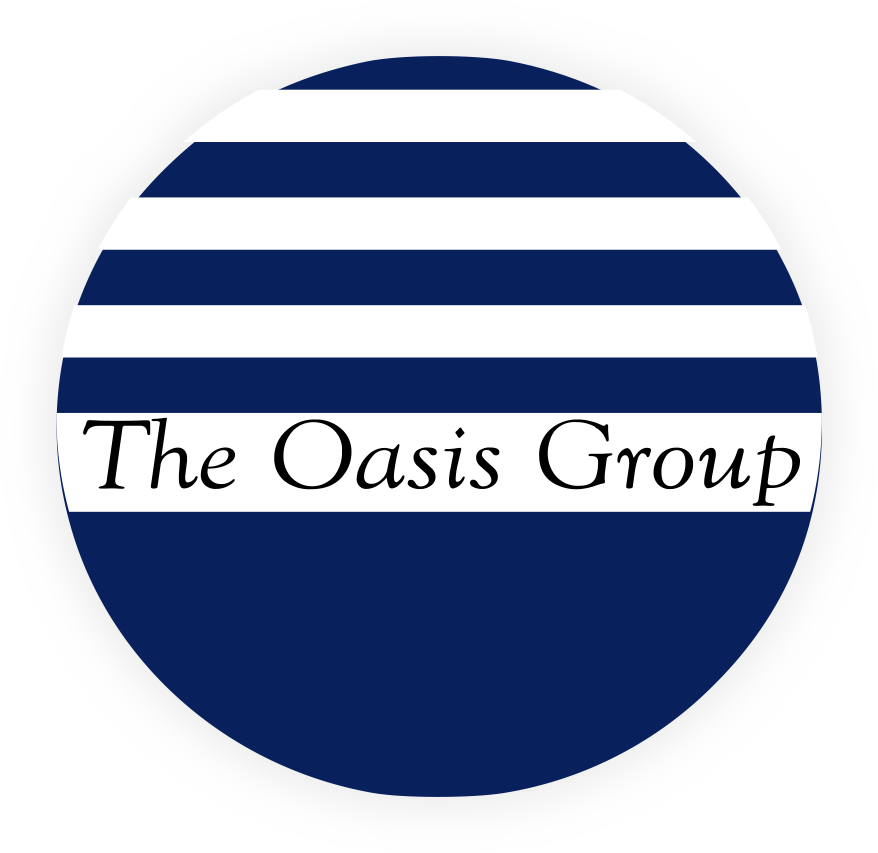What Is Business Process Management, and Why Wealth Management Firms Must Embrace It Now
Why BPM and BPMN Are No Longer Optional for Forward-Thinking Wealth Managers
The Digital Reckoning Has Arrived
Wealth management firms today face an unprecedented convergence of challenges. Client expectations have evolved beyond traditional relationship management to demand digital-first experiences. Legacy infrastructure creaks under the weight of manual processes that were adequate decades ago but are now operational liabilities.
While 72% of wealth firms express confidence about their digital transformation progress, only 30% qualify as leaders in implementing essential digital capabilities.[i] This gap reveals a critical truth: confidence without proper foundation is dangerous. The firms that survive and thrive will be those that recognize Business Process Management (BPM) and Business Process Model and Notation (BPMN) as strategic infrastructure, not optional enhancements.
The question isn’t whether your firm needs process modernization, it’s whether you’ll lead the transformation or be forced to follow.
Defining Business Process Management
Business Process Management is a systematic approach to making an organization’s workflows more effective, efficient, and adaptable. BPM encompasses techniques and structured methods for studying, identifying, changing, and monitoring business processes to ensure they run smoothly and can be improved over time.
Unlike ad-hoc process improvement efforts, BPM creates a disciplined framework for continuous optimization. It transforms processes from undocumented, tribal knowledge, and assumption-based activities into visible, measurable assets that can be analyzed, improved, and scaled.
For wealth management firms, BPM addresses three fundamental challenges:
Operational Complexity: Modern wealth management involves intricate workflows spanning client onboarding, portfolio management, compliance reporting, and relationship maintenance. BPM explicitly addresses the complexity of inter-application and cross-repository processes, incorporating both data-driven and content-driven processes on an ongoing basis. It transcends point to point integrations with workflow based integrations used to move a business process forward.
Scalability Requirements: As firms grow or adapt to market changes, BPM ensures processes can be replicated, modified, and optimized without starting from scratch each time.
Regulatory Demands: With RegTech investments projected to reach $76 billion by 2026, growing at a 17.4% compound annual rate, firms need standardized processes that support audit trails, compliance documentation, and regulatory reporting.
Understanding BPMN: The Global Standard
At the heart of effective BPM lies Business Process Modeling and Notation (BPMN), a globally recognized standard that provides a graphical notation for specifying business processes in a Business Process Diagram. Originally developed by the Business Process Management Initiative and now maintained by the Object Management Group, BPMN serves as the universal language for process visualization.
BPMN is also ratified as ISO 19510, making it an international standard. This standardization matters profoundly for wealth management firms operating in a regulated environment where consistency, auditability, and portability are essential.
BPMN transforms abstract processes into concrete, visual workflows. Instead of relying on tribal knowledge or outdated documentation, firms can create precise process maps that show:
- Who performs each activity (roles and responsibilities)
- What actions are required (tasks and decisions)
- When activities occur (sequences and timing)
- How information flows between steps (data and documents)
Consider the typical client onboarding process. Traditional documentation might describe this as “gather client information, complete risk assessment, establish investment policy, fund accounts.” BPMN modeling reveals the actual complexity: decision points based on client type, parallel approval workflows, exception handling for incomplete documents, and integration touchpoints with multiple systems. The Oasis Group approaches our engagements with 40+ pre-build BPMN processes to accelerate our implementation engagements.
The Strategic Value of Global Standards
BPMN provides a common business process modeling language that’s readily understandable by all business stakeholders; the business process analysts who create and refine processes, the implementation team responsible for implementing business processes, and the business users who monitor and manage them.
This universality delivers immediate benefits:
Cross-Team Alignment: When business analysts, operations teams, advisors, compliance officers, implementation teams, and senior management can reference the same visual process models, misunderstandings decrease dramatically. Everyone operates from the same blueprint.
Vendor Independence: Because BPMN is an open standard, process models created today remain valuable regardless of future technology decisions. Firms aren’t locked into proprietary workflow systems that become obsolete or expensive to maintain. Many firms who implemented Salesforce find this today in their significant costs to build and maintain workflows in the proprietary Salesforce workflow system.
Knowledge Preservation: BPMN helps organizations create a library of process flows, case definitions, and business rules to train new employees. This institutional knowledge becomes portable and scalable rather than dependent on individual expertise.
Audit Readiness: Regulatory examinations become manageable when firms can present clear, standardized process documentation that shows exactly how compliance requirements are met at each step.
Integration Benefits: The Compound Effect
The real power of BPM and BPMN emerges through their integration capabilities. Modern wealth management operates across multiple systems: CRM platforms, portfolio management tools, compliance systems, document management platforms, and external custodian data feeds. Without standardized process modeling, these integrations become fragile, undocumented dependencies.
BPMN-modeled processes create integration blueprints that show:
- System Touchpoints: Which applications are involved at each process step
- Data Requirements: What information must flow between systems
- Exception Handling: How to manage system failures or data inconsistencies
- Performance Metrics: Where to measure process efficiency and outcomes
This visibility enables firms to make informed business process driven decisions. Instead of being trapped by legacy system limitations, firms can evaluate new platforms based on their ability to support well-defined process requirements.
The Foundation for Digital Process Automation
BPMN plays a pivotal role in enabling hyperautomation across organizational operations, leveraging cutting-edge technologies such as artificial intelligence (AI), machine learning (ML), robotic process automation (RPA), and process mining.
Here’s the crucial insight: automation without process standardization creates chaos at scale. Firms that attempt to automate poorly defined or inconsistent processes simply accelerate their dysfunction.
BPM and BPMN create the necessary foundation for intelligent automation by:
Defining Automation Boundaries: Clear process models show which activities can be automated versus those requiring human judgment or regulatory oversight. This helps firms to define where they want a Human in The Loop (HITL).
Establishing Quality Gates: BPMN workflows include decision points and exception handling that ensure automated processes maintain appropriate controls.
Enabling Incremental Improvement: Standardized processes can be automated progressively, allowing firms to learn and adjust without massive technology overhauls.
Supporting AI Integration: When artificial intelligence agents are deployed, they need structured environments with clear rules, inputs, and authority boundaries. BPMN provides exactly this framework.
Preparing for the AI-Enabled Future
44% of financial services executives believe that investing in AI will be crucial for digital transformation success. However, AI deployment without proper process foundation often fails. AI agents require:
- Structured Inputs: Clear data requirements and quality standards
- Defined Authority: Specific parameters for autonomous decision-making
- Exception Protocols: Established procedures for handling edge cases
- Performance Monitoring: Metrics and feedback loops for continuous improvement
BPMN modeling addresses each of these requirements by creating visual documentation of process logic, decision criteria, and information flows. When AI agents are eventually deployed, they operate within well-defined boundaries rather than attempting to learn from inconsistent or undocumented processes. This will significantly reduce AI hallucinations, bias, and ambiguous results.
The Strategic Infrastructure Imperative
BPM and BPMN represent strategic infrastructure—foundational capabilities that enable everything else. Just as firms invest in robust technology platforms and comprehensive compliance frameworks, process standardization has become essential for competitive advantage.
With organic growth now the key differentiator for wealth managers navigating a more competitive environment, operational efficiency directly impacts client acquisition and retention. Firms with streamlined, consistent processes can:
- Accelerate Client Onboarding: Reduce time-to-revenue for new relationships
- Improve Service Quality: Ensure consistent client experiences across all touchpoints
- Scale Efficiently: Add new clients and assets without proportional increases in operational overhead
- Enable Innovation: Free up human resources from routine tasks to focus on value-added activities
The alternative, continuing with ad-hoc and undocumented processes, becomes increasingly untenable as competitive pressures intensify and regulatory requirements expand.
Implementation: Starting Your Journey
Successful BPM adoption doesn’t require massive organizational disruption. The most effective approach begins with:
Process Discovery: Identify and document current-state workflows for critical business processes like client onboarding, annual reviews, or compliance reporting.
Stakeholder Engagement: Include representatives from business, operations, compliance, and technology teams in process modeling sessions to ensure comprehensive understanding.
Pilot Implementation: Select one process for BPMN modeling and optimization before expanding to additional workflows.
Tool Selection: Choose BPMN-compliant modeling tools that support collaboration and can export standard formats for future flexibility.
Training Investment: Investing in BPMN training optimizes collaboration and communication, bridging the gap between non-technical leaders and IT professionals.
The Competitive Advantage of Process Leadership
Wealth management firms that embrace BPM and BPMN today position themselves advantageously for every future challenge: regulatory changes, technology evolution, market disruption, and competitive pressures. They create organizational capabilities that compound over time rather than technical debt that constrains future options.
As the industry faces slower growth rates and increased competition for control of investor assets, operational excellence becomes a primary differentiator. The firms that can deliver superior client experiences through efficient, consistent processes will capture disproportionate market share.
The Bottom Line: BPM and BPMN aren’t process improvement methodologies, they’re strategic capabilities that determine which firms can adapt, scale, and compete effectively in the digital wealth management landscape. The investment in process standardization you make today creates the foundation for every innovation you’ll deploy tomorrow.
Your processes are either strategic assets or operational liabilities. BPM and BPMN ensure they become the former.
For more articles from The Oasis Group on BPM and BPMN, including why CRM-centric process management is inadequate for wealth management firms, why AI agents are only as strong as your workflows, and more, please click here.
[i] Broadridge Financial Solutions. “2024 Digital Transformation & Next-Gen Technology Study.” Broadridge, 2024. https://www.broadridge.com/2024-digital-transformation-study-wealth.










